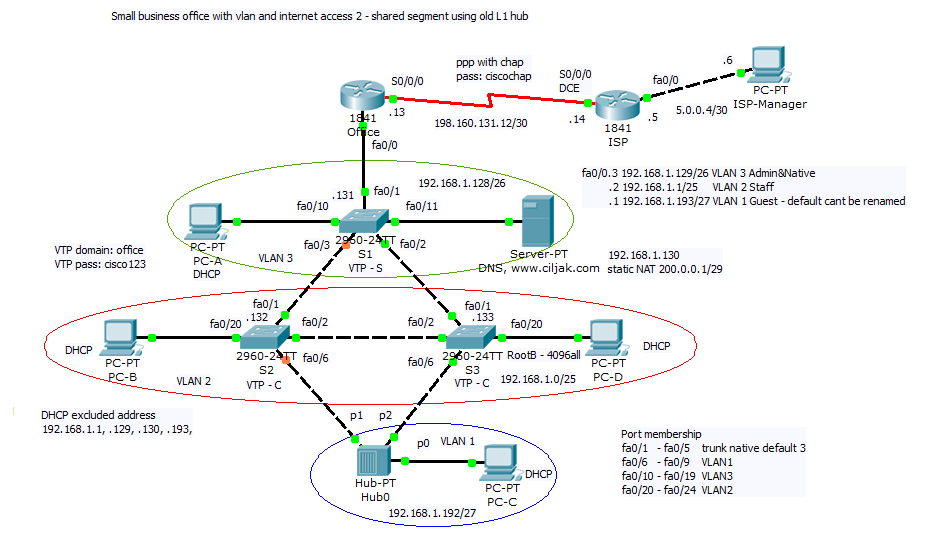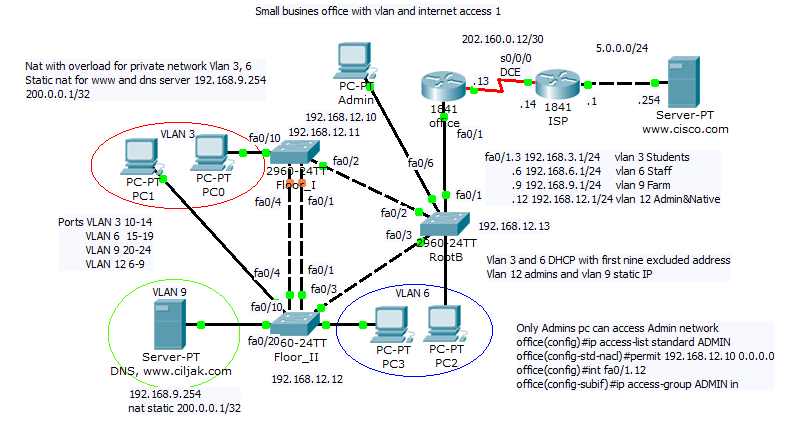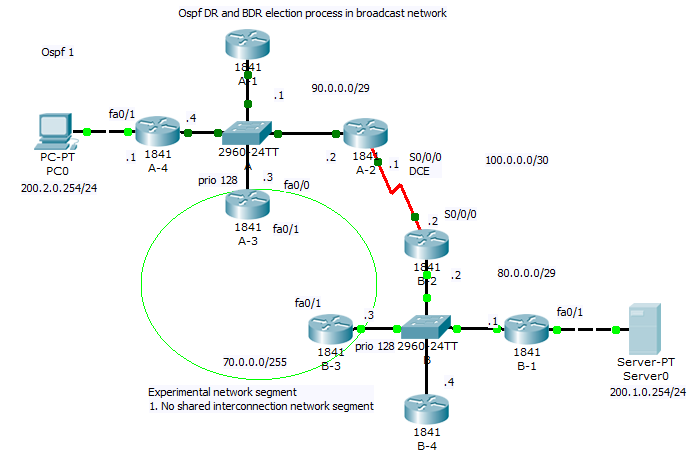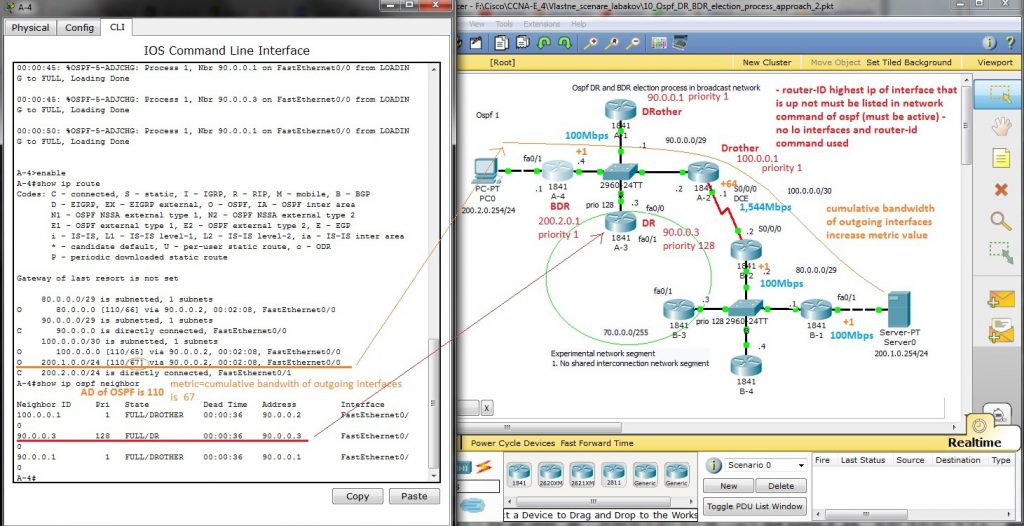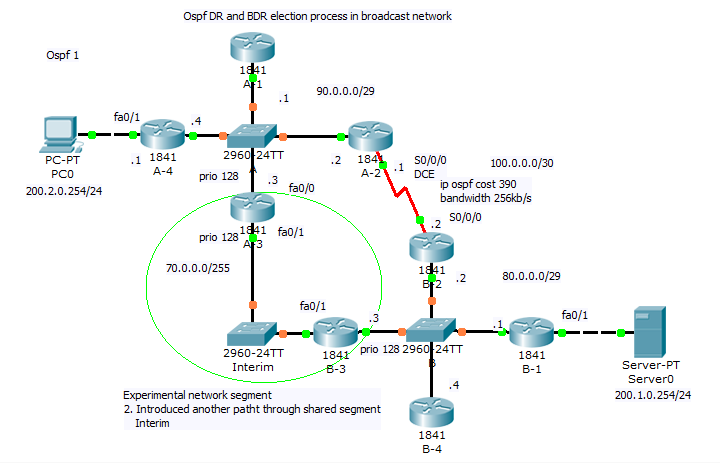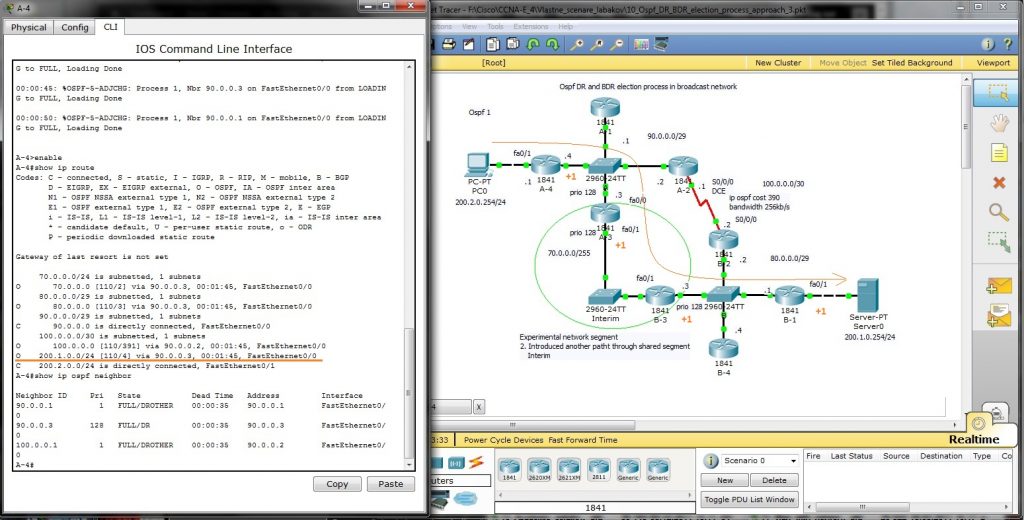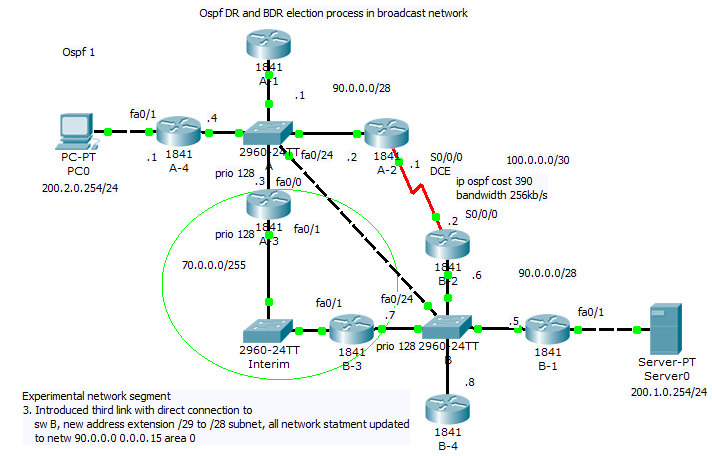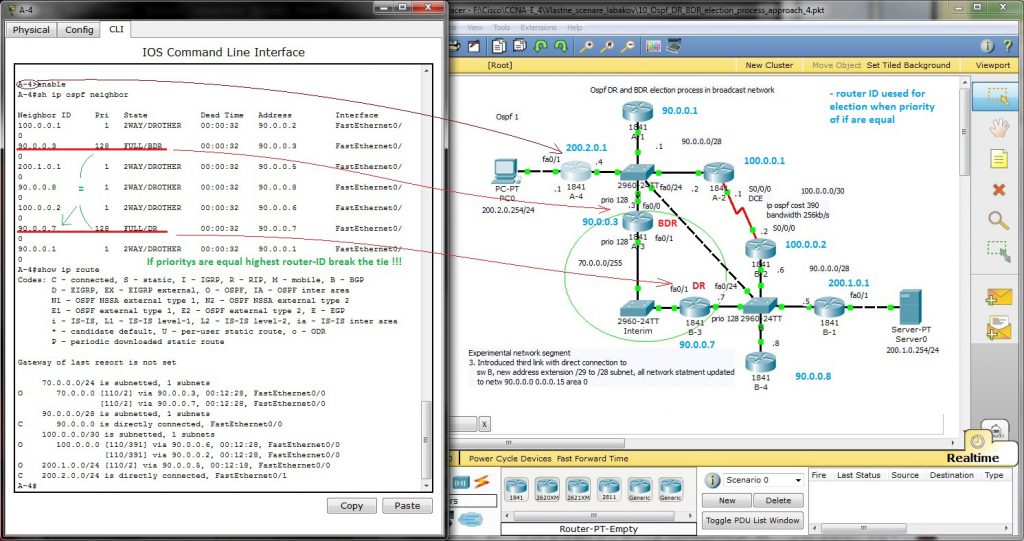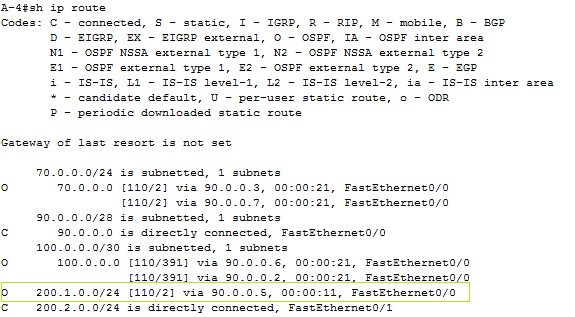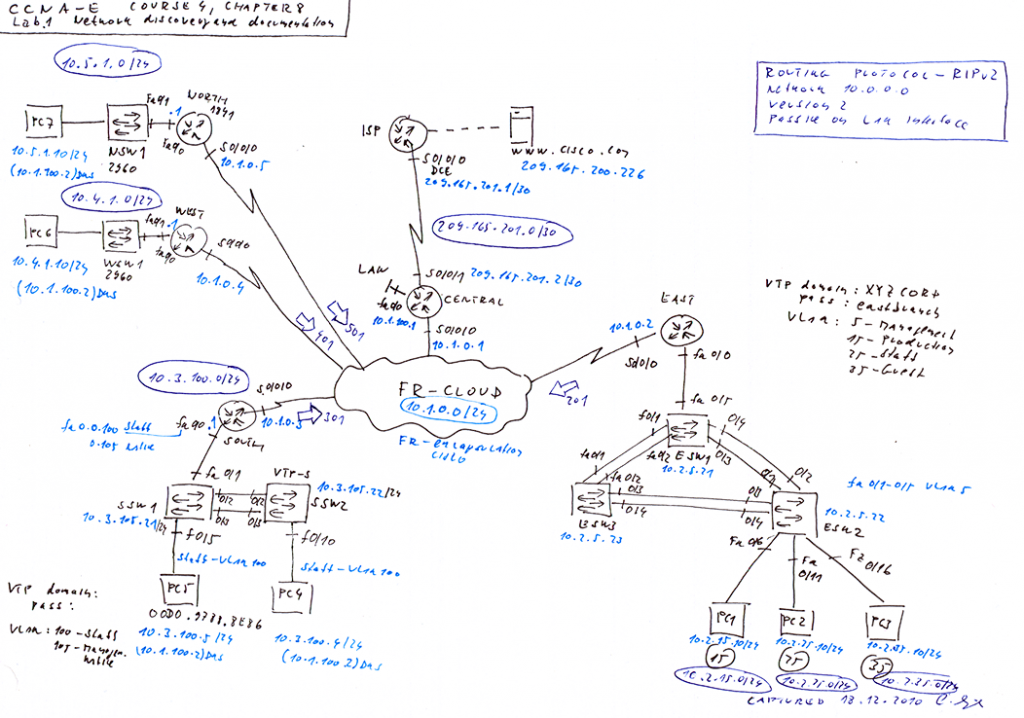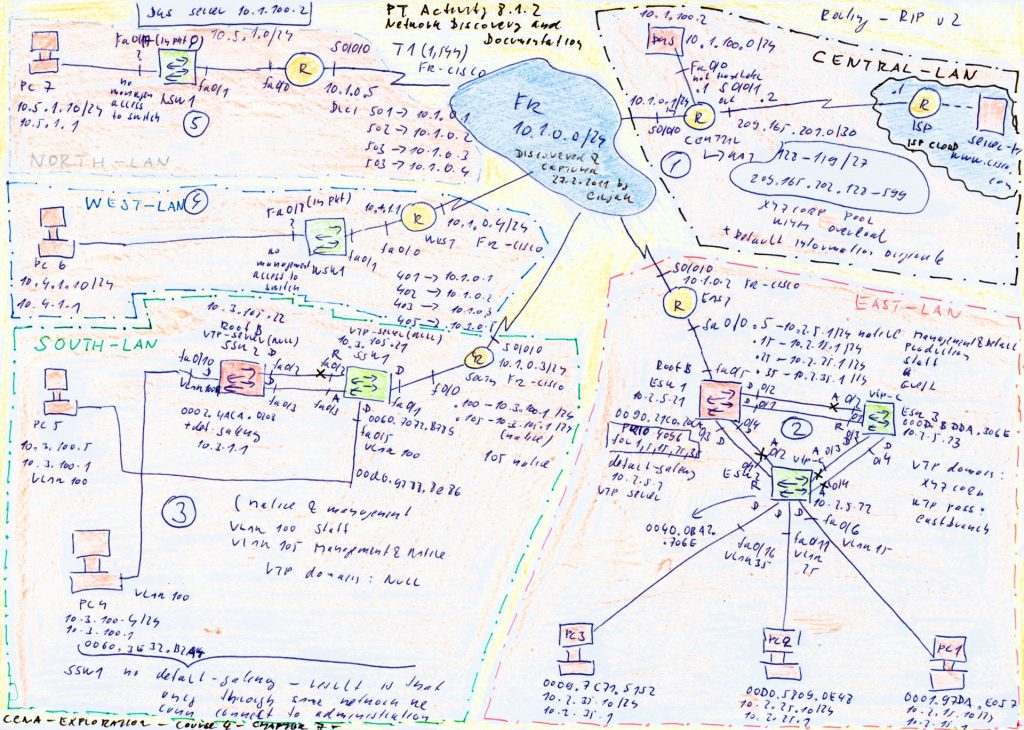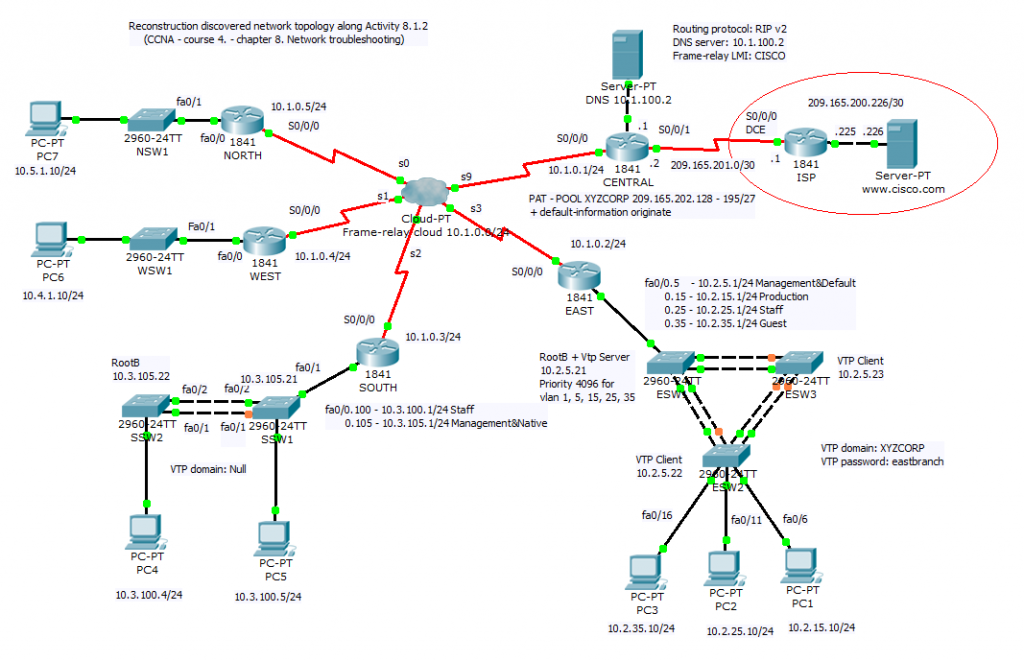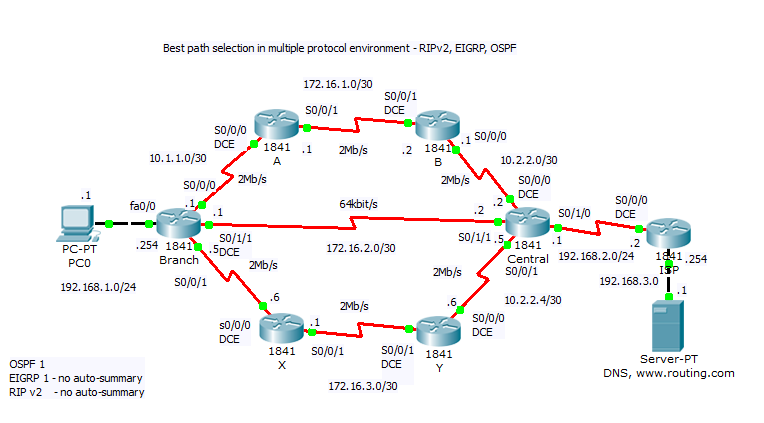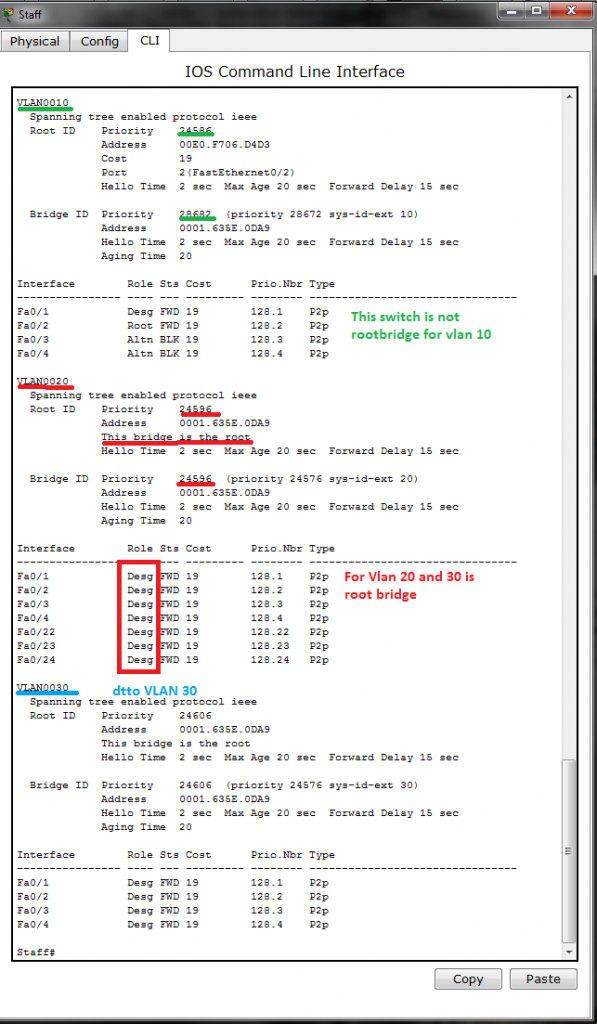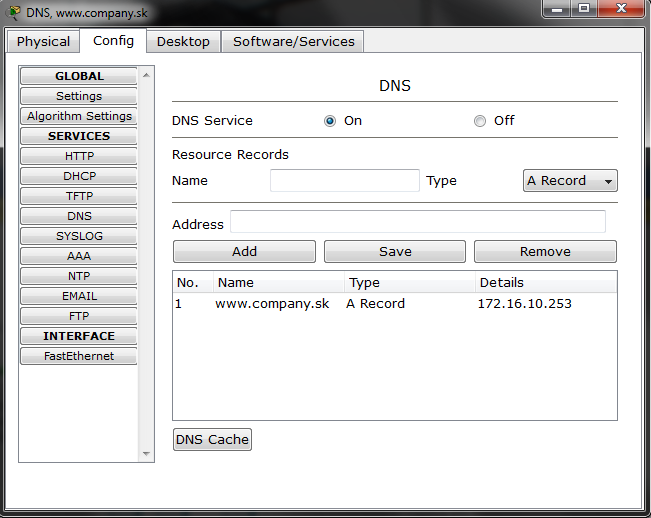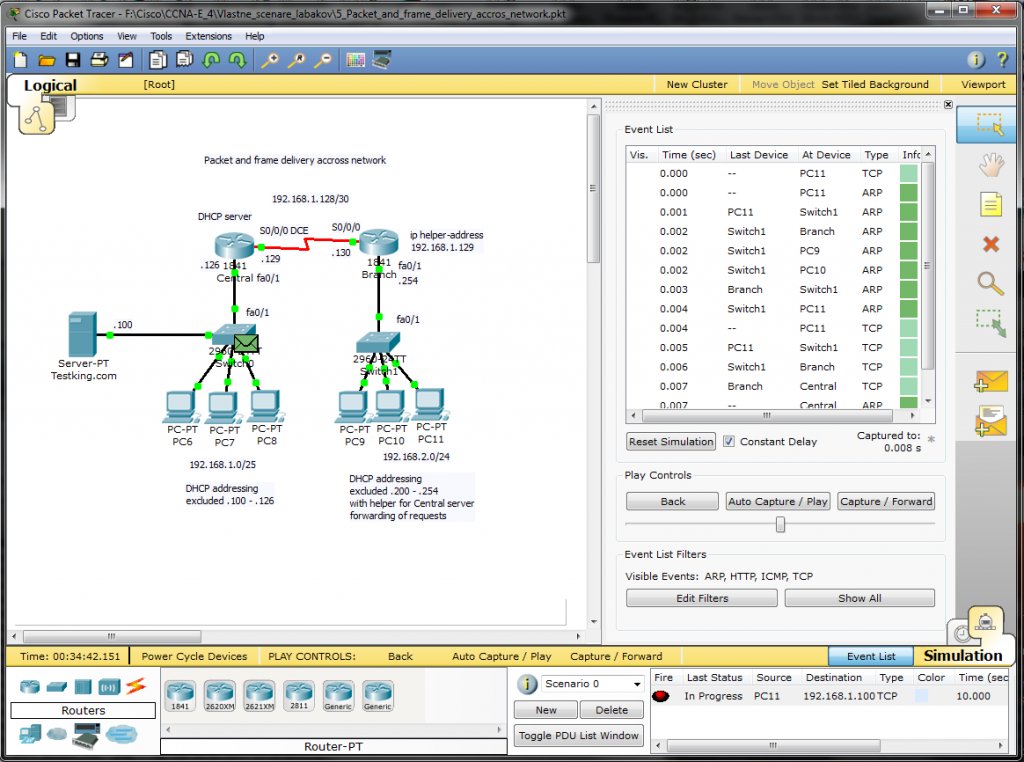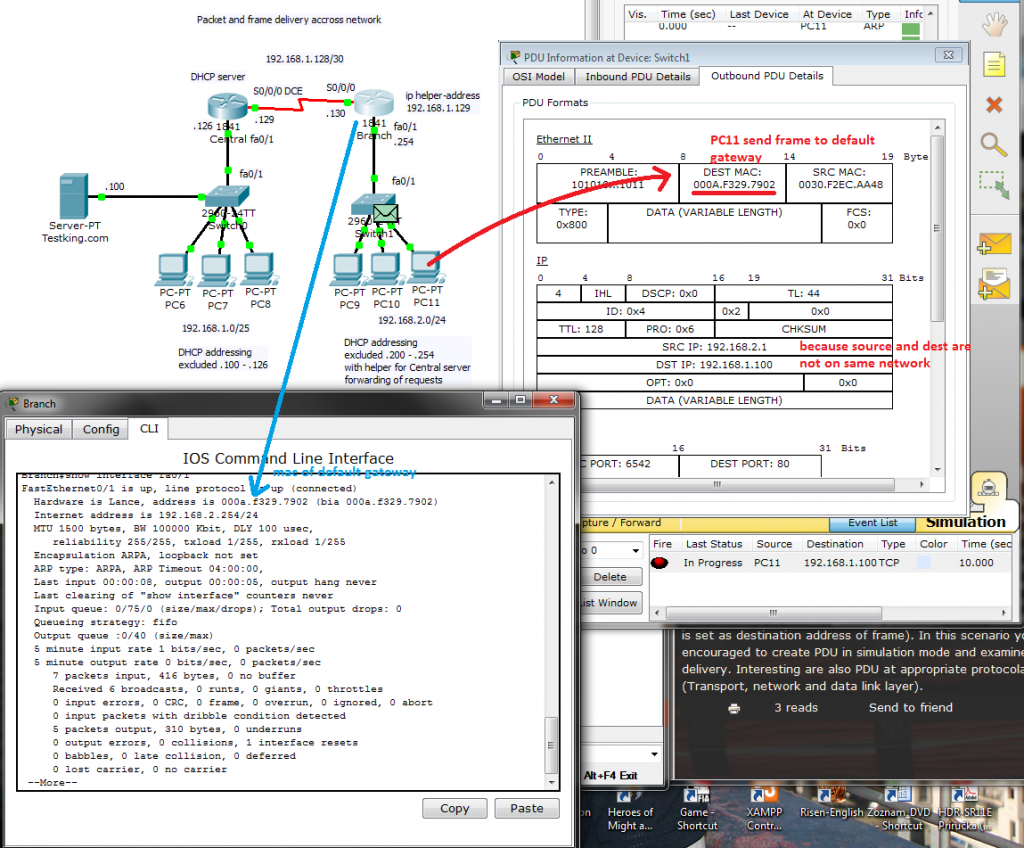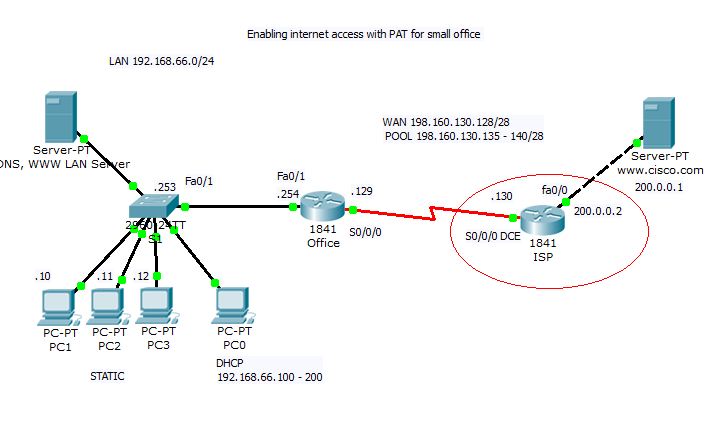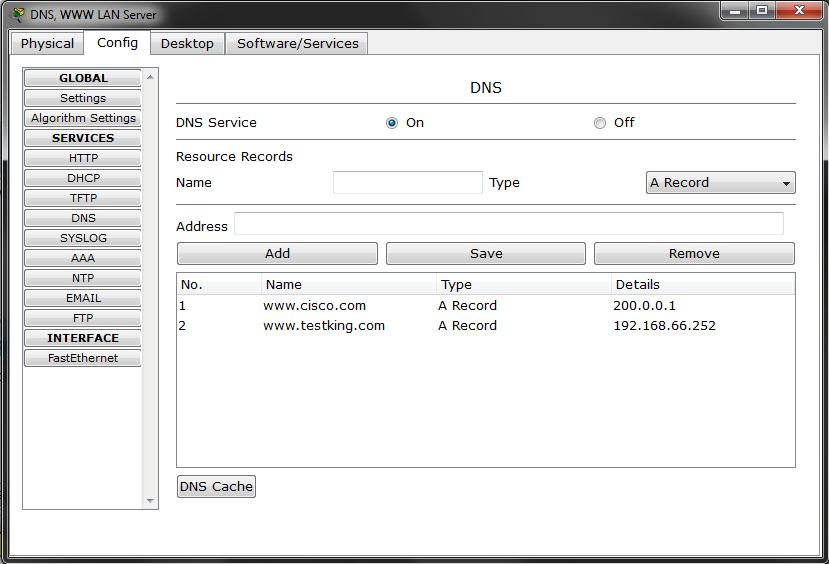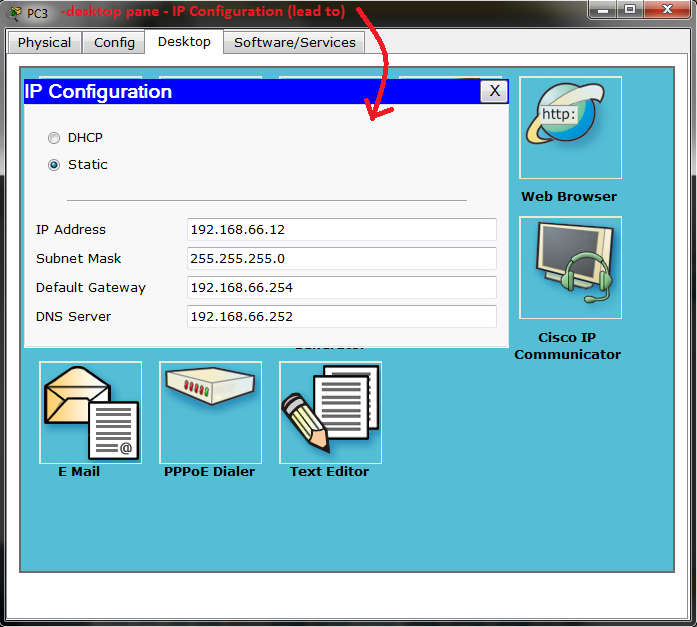8. Small office configuration scenario with VLAN and internet access nr. 2
Small office network in our scenario separate hosts on 3 VLAN (1, 2 and 3). Because one part of network is really old we can here found shared segment with old L1 hub. Redundant link in switched topology introduced between S2 and S3 must be monitored with STP.
Scenario consist of:
- PPP link with CHAP authentication between Office and ISP router
Office part of config:
ISP part of config:
username Office password 0 ciscochap
- NAT with PAT on S0/0/0 for inside hosts internet access
ip access-list standard NATpermit 192.168.1.0 0.0.0.255
ip nat inside source list NAT interface Serial0/0/0 overload
- static NAT for local server
ip nat inside source static 192.168.1.130 200.0.0.1 - DHCP for appropriate LAN clients
DHCP excluded address192.168.1.1, .129, .130, .193,ip dhcp excluded-address 192.168.1.1ip dhcp excluded-address 192.168.1.129ip dhcp excluded-address 192.168.1.130ip dhcp excluded-address 192.168.1.193ip dhcp excluded-address 192.168.1.131ip dhcp excluded-address 192.168.1.132ip dhcp excluded-address 192.168.1.133!ip dhcp pool VLAN3network 192.168.1.128 255.255.255.192default-router 192.168.1.129dns-server 192.168.1.130ip dhcp pool VLAN2network 192.168.1.0 255.255.255.128default-router 192.168.1.1dns-server 192.168.1.130ip dhcp pool VLAN1network 192.168.1.192 255.255.255.224default-router 192.168.1.193dns-server 192.168.1.130
- router on a stick inter VLAN communication on Office router
interface FastEthernet0/0no ip addressduplex autospeed auto!interface FastEthernet0/0.1encapsulation dot1Q 1ip address 192.168.1.193 255.255.255.224ip nat inside!interface FastEthernet0/0.2encapsulation dot1Q 2ip address 192.168.1.1 255.255.255.128ip nat inside!interface FastEthernet0/0.3encapsulation dot1Q 3 nativeip address 192.168.1.129 255.255.255.192ip nat inside
- S3 rootBridge selection for STP
spanning-tree vlan 1-3 priority 4096
- VTP configuration with S1 acting as VTP Server propagating VLAN configuration to entire network
VTP domain: officeVTP pass: cisco123
VTP-server – S1, VTP-Client S2, S3
- subnetting with VLSM
192.168.1.129/26 VLAN 3 Admin&Native192.168.1.1/25 VLAN 2 Staff192.168.1.193/27 VLAN 1 Guest – default cant be renamed
Preconfigured scenario can be obtained from here (PKT 5.2 or above you need). Topology diagram for scenario is
